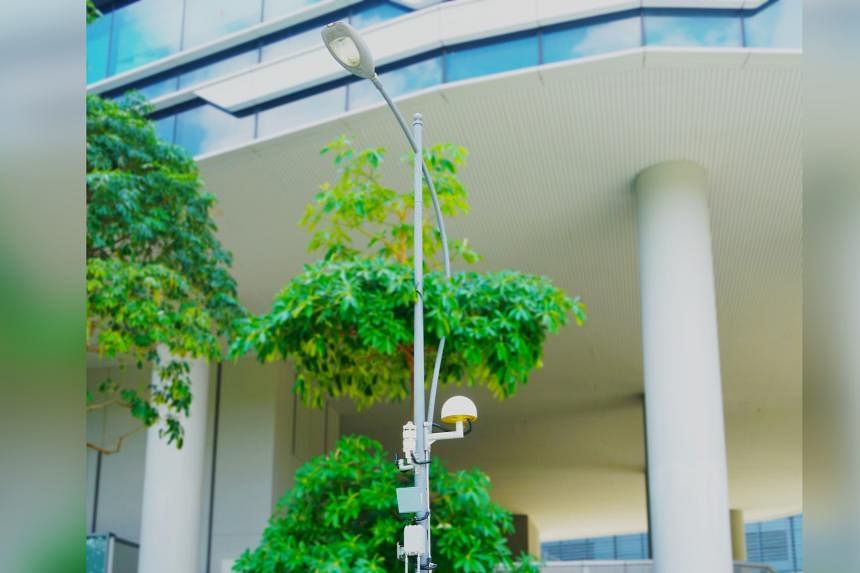SINGAPORE - The lights have dimmed on plans to set up a large-scale network of souped-up lamp posts that can detect speeding e-scooters, hazy weather and unruly crowds.
The decision to scrap the mass deployment of smart lamp posts follows the entry of more cost-effective sensor technology that offers more flexibility compared with fixed infrastructure such as lamp posts.
Revealing the decision on Tuesday in a written parliamentary statement, Minister-in-charge of Smart Nation and Cybersecurity Josephine Teo said: “We have assessed that it is not practical to roll out the LaaP (Lamppost-as-a-Platform) on a large scale.”
Trials started in phases beginning in late 2017 to explore the technical and business feasibility of using lamp posts to mount sensors. They were conducted at Geylang and one-north, as well as at new housing development Punggol Northshore.
The network would utilise state-of-the-art artificial intelligence technologies to analyse the surveillance data for public agencies to plan a more coordinated approach to incidents and emergencies.
“The concept was based on the available technology and information at that point in time, with several other leading countries similarly exploring this concept,” she said.
Mrs Teo, who is also the Communications and Information Minister, was responding to Mr Yip Hon Weng’s (Yio Chu Kang) question on whether the trial had concluded and if there are plans for a large-scale roll-out.
Technology has evolved since the project started in 2017, and there are more cost-effective ways to serve the needs of government agencies, she added.
“The use of mobile sensor deployment and fuel cells have brought about greater flexibility and a lower cost as compared to the use of fixed infrastructure like lamp posts,” said Mrs Teo.
These mobile structures resemble poles sticking out of cubes and do not need the laying of cables for connectivity and power.
But the trials have paved the way for the development of data exchange platforms and digital tools that allow agencies to share data from sensors, said Mrs Teo.
Being connected to a constant source of power, lamp posts were considered an ideal platform to piggyback light bulbs, sensors and other electronics to monitor nearby vehicles or people. Their potential has been explored around the world, from basic light dimming automation to save energy to crowd density mapping to prevent overcrowding.
There are more than 95,000 lamp posts in Singapore, according to the smart lamp-post plans detailed on the Smart Nation site. Smart lamp posts were considered for mounting temperature and humidity sensors that can also detect the presence of pollutants. They could also piggyback sensors that monitor footfall and serve as a navigational beacon to guide autonomous vehicles in the future, it said.
In 2018, the Government awarded a $7.5 million tender to local conglomerate ST Engineering to conduct a trial using smart lamp posts that included the nabbing of speeding cyclists and e-scooter riders on pavements.
But the project has since hit a few snags and was delayed by more than a year during the Covid-19 pandemic. It also missed out on a key anchor – the police – as they had plans to roll out their own network of police cameras by 2030.
Today, advancements in fuel cell battery technology and solar panels, coupled with 5G coverage across the nation, have allowed mobile sensors to be deployed nimbly without the need for power or data infrastructure, said the Infocomm Media Development Authority in its Digital Connectivity Blueprint.
Modern temporary surveillance cameras have been deployed by the authorities to monitor high-rise littering at housing estates and use speed sensors to check for speeding e-scooters on public paths, it said.


